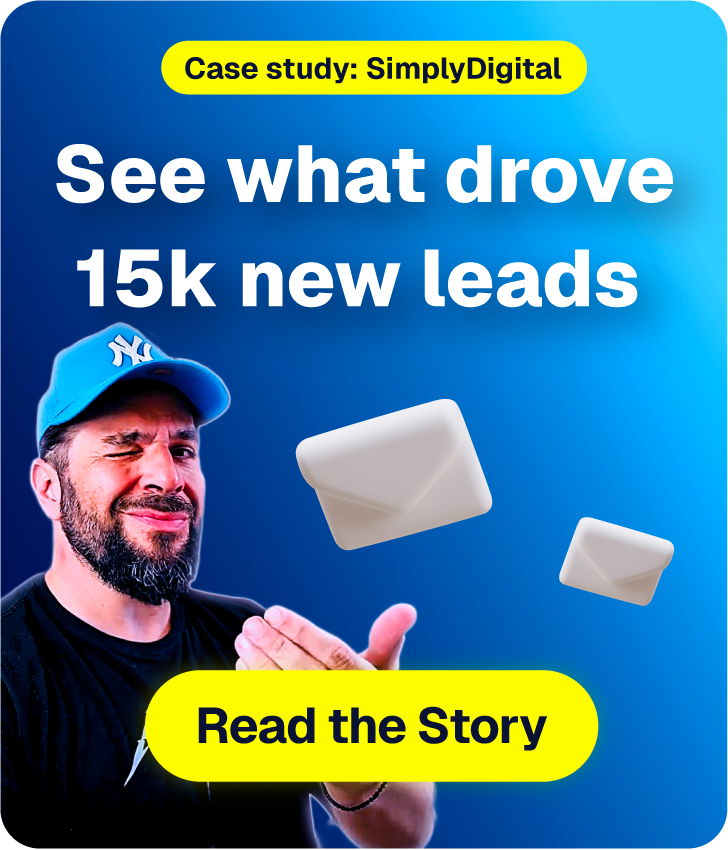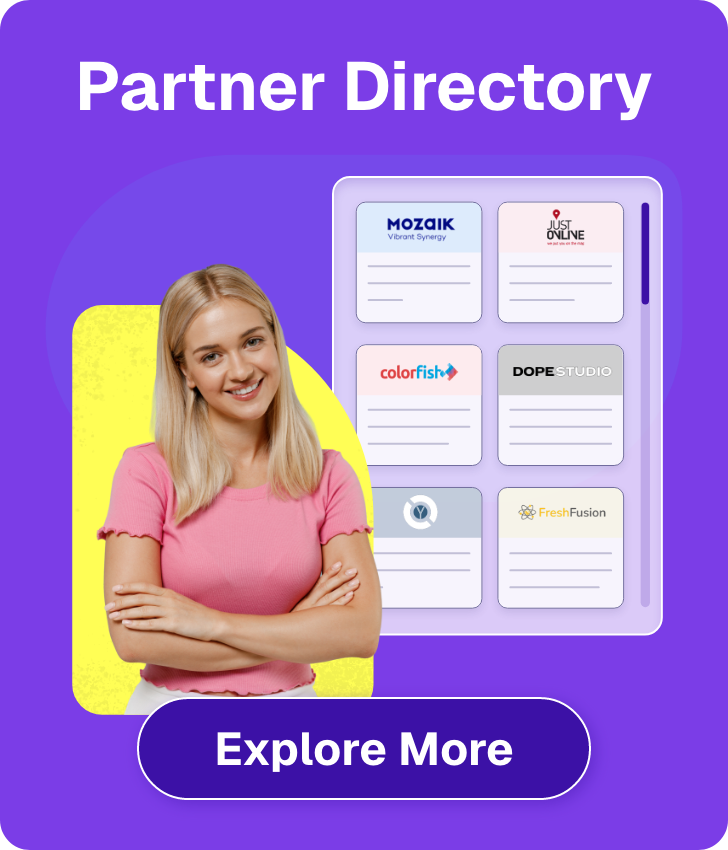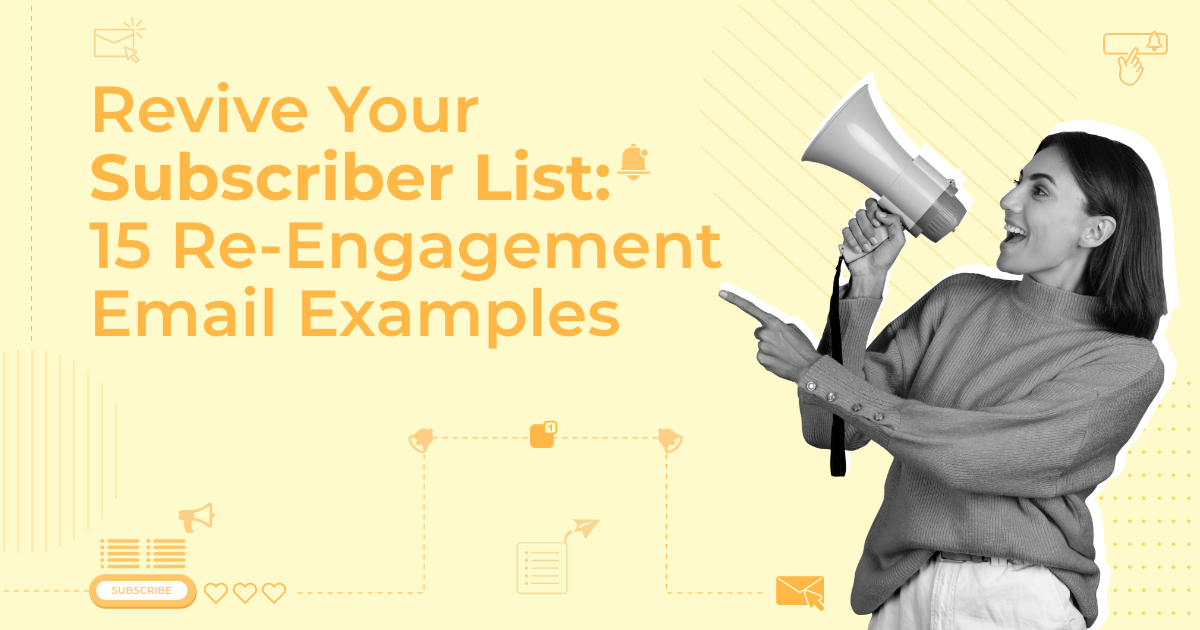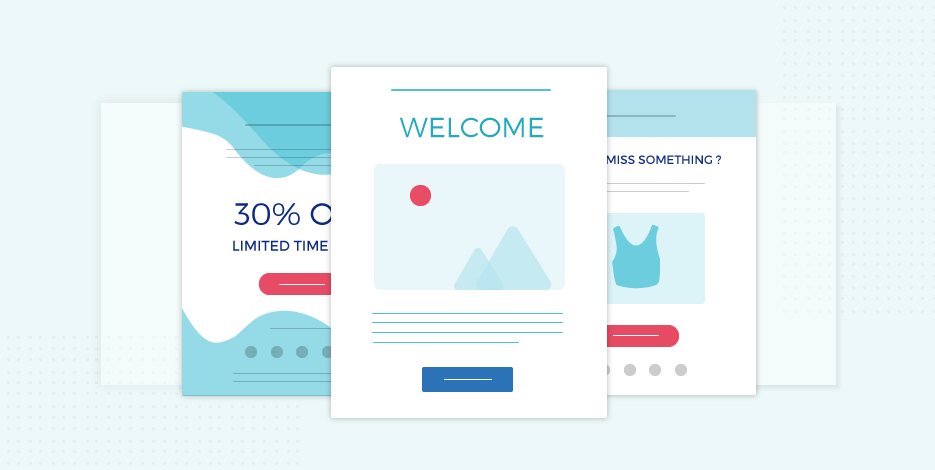
How To Create A B2C Email Marketing Strategy [Complete Guide]
Email marketing is all about reaching out to your customers with targeted campaigns. It’s a versatile strategy that can benefit almost any business, particularly the B2C industry.
But let’s be honest—getting your emails noticed isn’t always easy. With inboxes overflowing, fierce competition, and deliverability issues, many B2C marketers find it tough to capture and keep their audience’s attention. It’s frustrating to see your carefully crafted emails go unnoticed or unopened.
That’s where our guide comes in. We’ve put together a comprehensive guide to help you navigate B2C email marketing. You’ll discover what it really entails, how it stands apart from B2B email marketing, and the unique advantages it brings to the table.
We’ll also break down the costs involved in running B2C campaigns, showcase different types of effective emails, and share best practices to help you out.
Turn one-time buyers into loyal customers
Decode customer behavior and recommend the right products to the right people.
Try for freeWhat is B2C Email Marketing?
Business-to-consumer (B2C) email marketing involves using email campaigns to promote a business’s brand, content, and products directly to consumers.
While these campaigns aim to encourage purchases, they also serve broader purposes.
For instance, B2C companies use email marketing to boost interest, increase brand awareness, build a strong reputation, and grow a loyal customer base as part of their wider digital marketing strategy.
What’s the Difference Between B2C and B2B Email Marketing?
The main difference between B2C and business-to-business (B2B) email marketing is their target audiences—B2C email campaigns are sent directly to individuals, whereas B2B campaigns are sent to other businesses.
Here are the major differences between them.
Email content
Firstly, the content of B2C and B2B email campaigns is vastly different. B2C emails aim to convert quickly and often include a sense of urgency (e.g., limited-time offer) and a call-to-action (CTA) that drive the recipient to act quickly, like making a purchase.
Here’s an example from Death Wish Coffee:
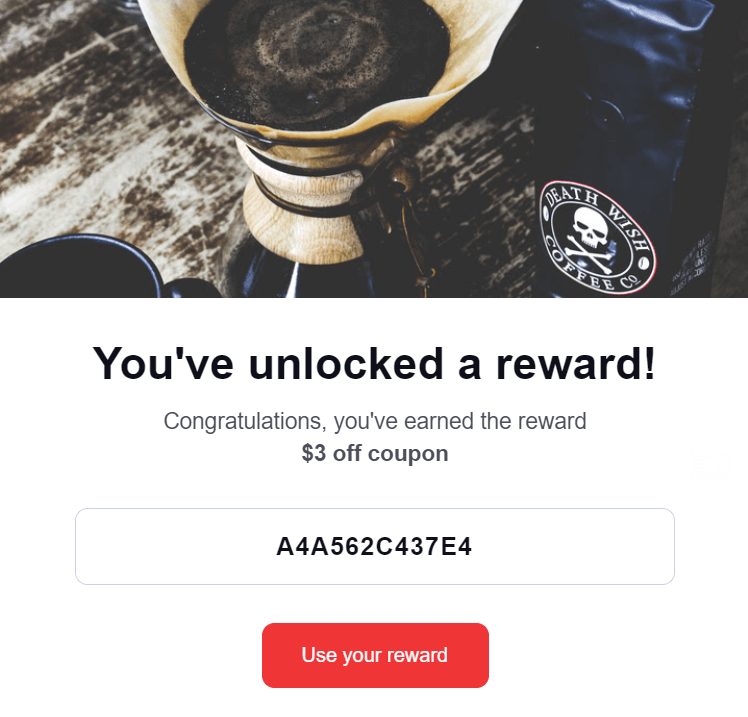
On the other hand, B2B email copy places a sharper focus on information, like industry pain points, and take a more educational route.
The goal is to provide this information to a company’s decision-makers. For example, a company that sells social media marketing software would contact stakeholders involved in social media at their company.
Then, they would position their product or service as a solution, prompting the receiver to convert.
Tone of voice
Due to the educational nature of B2B email marketing, its content contains more technical terminology and corporate jargon than B2C email content. Generally, it also tends to have a more formal tone, although this can vary depending on individual brand guidelines.
B2C email content avoids this and generally has a more straightforward, casual communication style. It intends to be more conversational and relatable and speaks to the recipient’s emotions, like curiosity and excitement.
Layout
B2C consumers care more about the visual aspects of an email campaign. They don’t want to read lengthy emails and prefer short, to-the-point written copy paired with eye-catching and appealing visuals.
B2B consumers, on the other hand, care more about the value of the content, like the information and proposition, and are more willing to read longer text. That doesn’t mean visuals should be overlooked, though.
Buying-cycle length
The time from proposition to purchase varies greatly between B2C and B2B email marketing campaigns.
In B2C, the buying cycle is shorter because you only need to appeal to one decision-maker, making it easier to address individual pain points.
In contrast, B2B requires buy-in from multiple stakeholders, resulting in a longer buying cycle with many touchpoints. Different decision-makers are involved at various stages, and they may drop out if their pain points aren’t addressed by the product or service offered.
Why is Email Marketing for B2C Important?
B2C email marketing is important because it contributes to driving sales, promotes customer loyalty, and — perhaps most importantly—lets you directly contact prospective customers.
Let’s look at the reasons in more depth.
- Direct communication: Email marketing allows you to communicate directly with your customers—potential and existing—and offer them a personalized, tailored experience.
- Customer engagement: It engages recipients with relevant content, promotions, and updates. This helps you create a better customer experience by keeping them interested and informed about your brand.
- Customer retention and loyalty: It’s an excellent way to remind customers of your products and services. You can also use email campaigns to promote your loyalty program and offer exclusive deals.
- Drive sales and conversions: It can drive sales and conversions by encouraging the subscriber to purchase or take another desired action.
- Cost-effectiviness: Compared to traditional marketing efforts, email marketing doesn’t involve much cost and therefore has a high return on investment (ROI).
How Much Does B2C Email Marketing Cost?
In the previous section, we mentioned that email marketing is relatively low-cost compared to traditional marketing channels. Of course, the exact price will depend on your business and its specific needs.
For example, using an agency can cost anywhere from $300 to $20,000 monthly. On the other hand, in-house marketing will generally cost you less. For small businesses it can be between $17 to $1,950 per month based on the email marketing tool one chooses.
Here are some popular ESP prices to consider:
- Moosend: $9/month for 500 contacts, unlimited emails
- Brevo: $9/month for 500 contacts, 5K emails/month
- ActiveCampaign: $19 for 1K contacts, 10x contact limit
- Hubspot: $20 for 1,000 contacts/month, 5 times your marketing contact tier
Now, to calculate the average cost of B2C email marketing for your business, consider the following factors:
- How much does your email marketing software cost?
- How often do you send email campaigns?
- How much do you spend on employee or agency time when planning, designing, and sending the campaigns?
- What is your bounce rate? If it’s high, you might need to pay more to ensure email deliverability.
Lastly, after you find your cost, you can use the formula below to calculate your email marketing ROI:
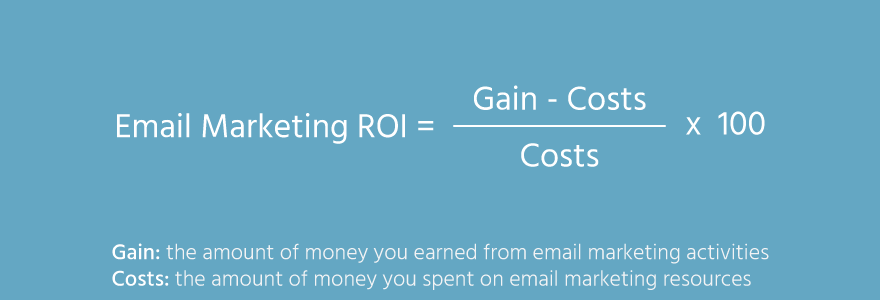
Essential Types of Emails For B2C (with Examples)
All email marketing strategies include specific email campaigns, like transactional emails and welcome emails for new subscribers.
However, B2C email marketing is set apart by the campaigns that come in between. Let’s look at some of them.
Abandoned cart emails
Cart abandonment emails are a type of automated message sent to potential customers who added items to their cart but didn’t complete the purchase.
These emails serve to remind customers of their unfinished transaction and often include incentives like discounts or free shipping to entice them to complete their purchase.
Personalized email subject lines can make these emails more effective. The main goal is to recover lost sales and reduce cart abandonment rates, ultimately boosting revenue.
Here’s an abandoned cart campaign from Warby Parker:
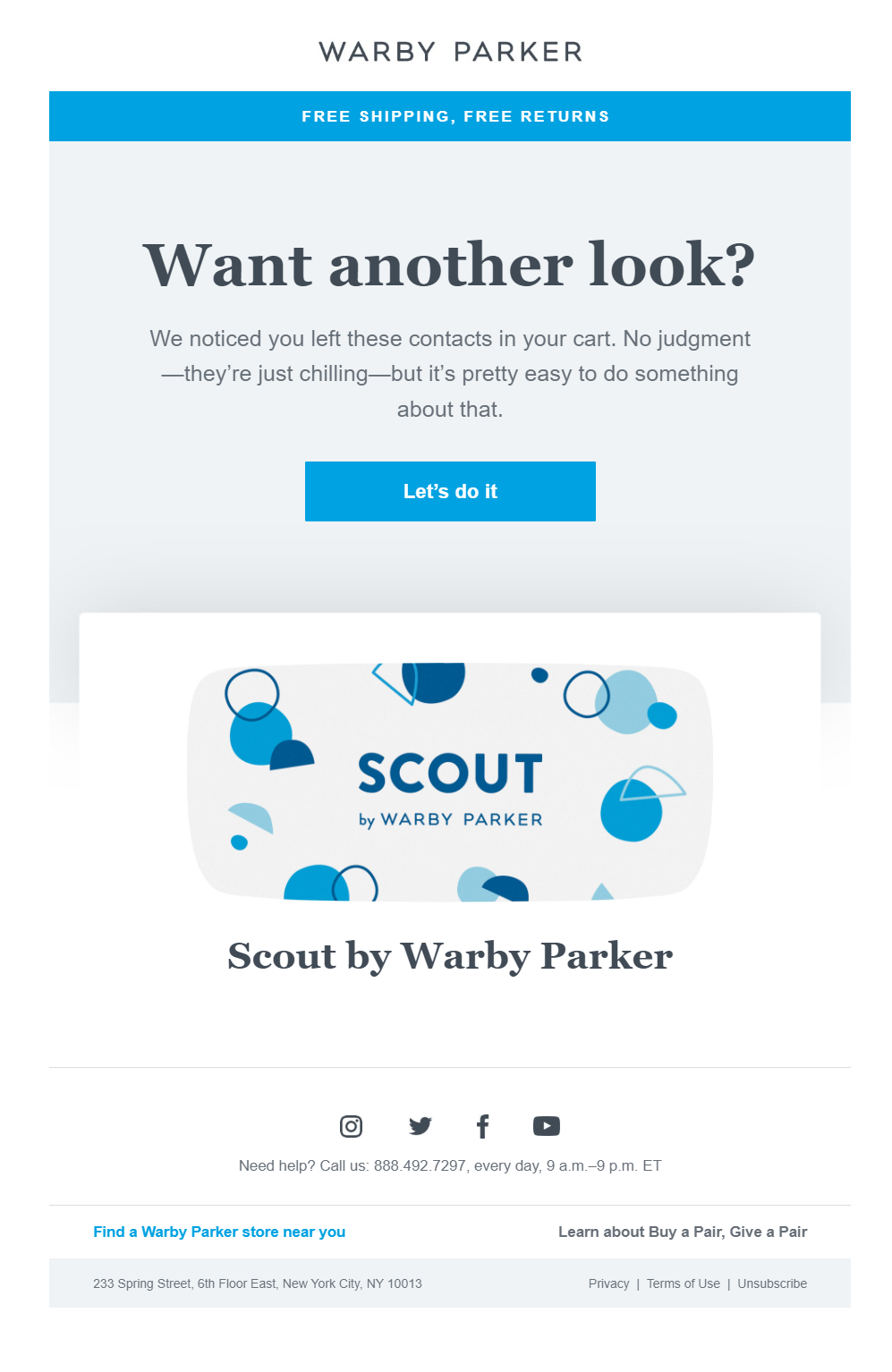
Tip: You can easily set them up using automated workflows (recipes) and craft your messages using pre-made email templates specifically designed for cart abandonment. Moosend offers a user-friendly workflow editor and cart abandonment templates which you can explore for free.
Additional resources:
Seasonal emails
Seasonal emails are sent to capitalize on seasonal changes and specific calendar events like summer, winter, or holidays such as Mother’s Day.
These emails promote relevant products, like swimwear for summer or cozy apparel for winter, and can also announce seasonal sales and special offers. They create a sense of urgency and relevance, encouraging customers to make timely purchases.
Seasonal emails help keep your brand top-of-mind during important shopping periods, driving engagement and sales.
Here’s how Tommie Copper tackles Black Friday:
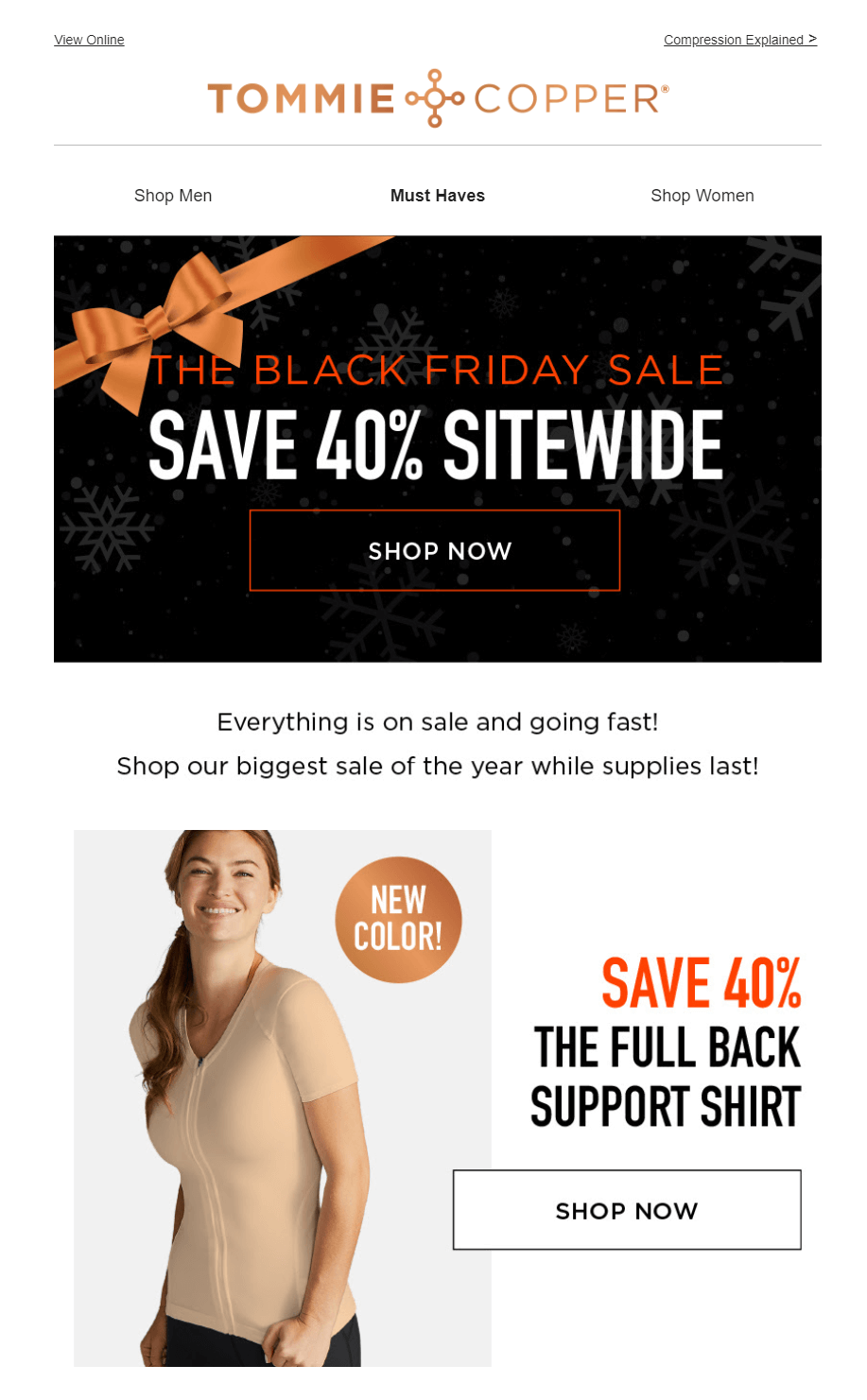
Additional resources:
- Holiday Newsletter Templates for Better Seasonal Campaigns
- Black Friday Email Marketing: Strategy & Tips
- Halloween Email Marketing Guide With Examples
Promotional emails
Promotional emails are versatile and can be used to announce new products or services, inform recipients of upcoming sales, or offer discounts and special deals to engaged customers.
Here’s an example by Fenty Beauty:
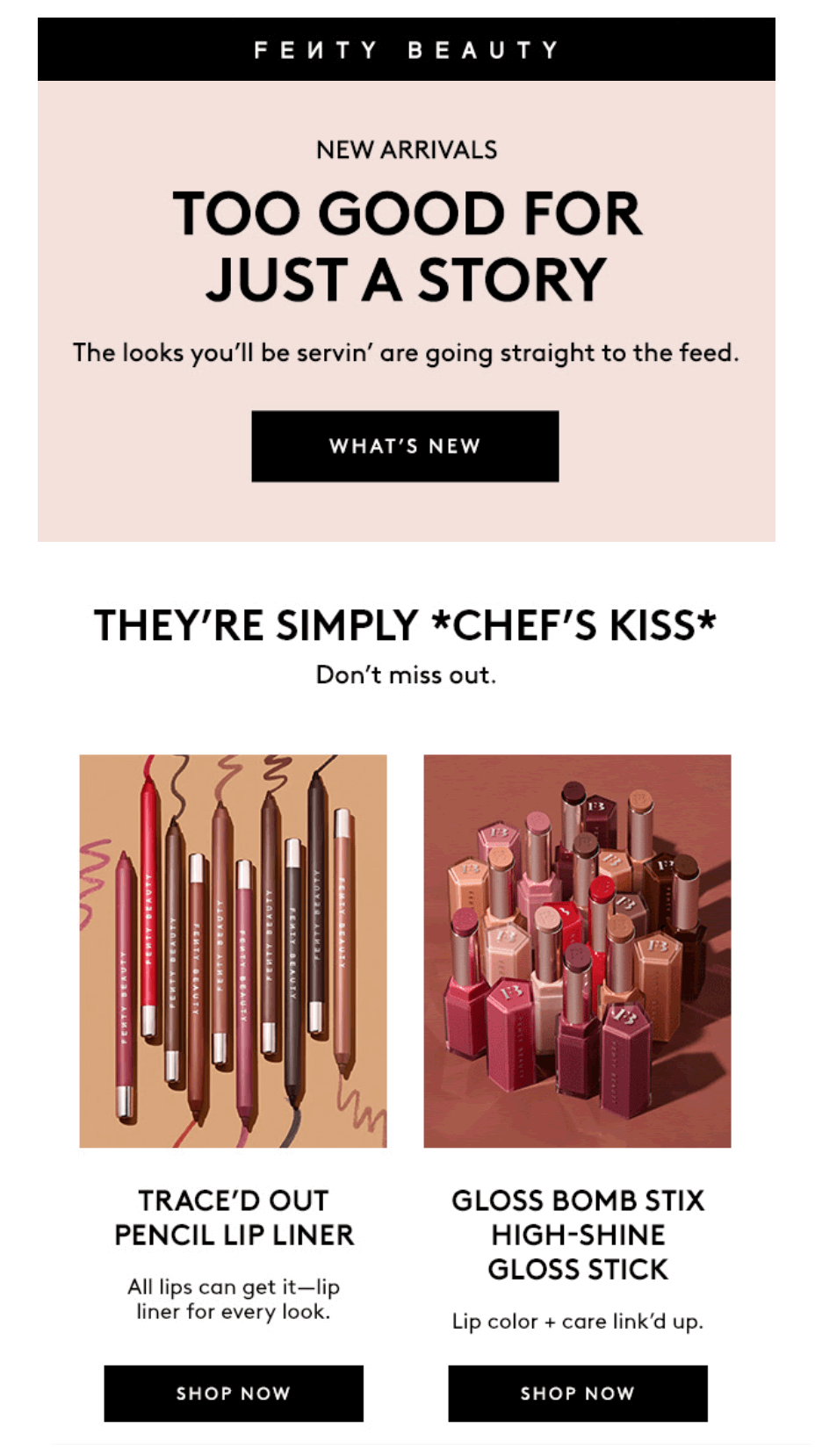
Adding compelling visuals, clear calls-to-action, and personalized offers can enhance their effectiveness.
Regularly sending promotional messages keeps your audience informed about your latest offerings and encourages repeat purchases.
Newsletters
Email newsletters are not just for B2B businesses; they play a significant role in B2C marketing as well. Use newsletters to create a narrative around your brand, share company news, and provide educational content related to your products.
Newsletters help build a relationship with your audience, keeping them informed and engaged with your brand over time. They are an excellent way to provide value beyond just promotions and sales.
Here’s an example from Bite:
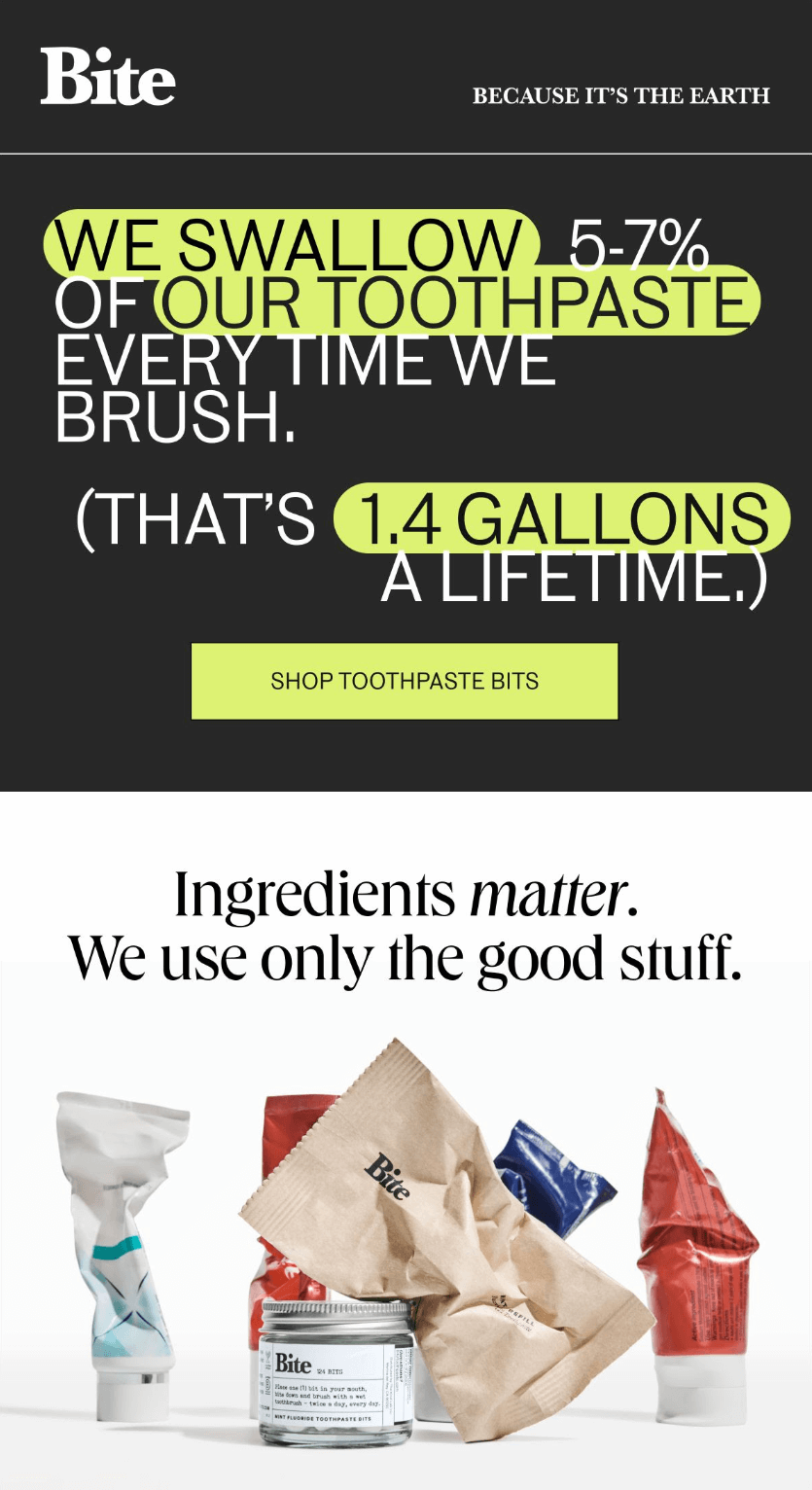
Additional resources:
Transactional campaigns
These automated messages are triggered by user actions on your website, such as order confirmations, shipping notifications, password resets, and account updates.
They’re crucial for B2C businesses because they provide essential information, enhance customer trust, and ensure timely communication. They typically have higher open rates, making them a great opportunity for upselling or cross-selling complementary products.
Moosend offers transactional emails and customizable templates to help you deliver timely, relevant messages to your customers effortlessly.

Product recommendations
Product recommendation emails are designed to suggest items to potential and existing customers based on their browsing history and past purchases.
These campaigns are highly personalized, making them effective in increasing sales and customer satisfaction. For example, cross-selling campaigns can recommend complementary products, encouraging customers to add more items to their cart.
Here’s how Dollar Shave Club did it:
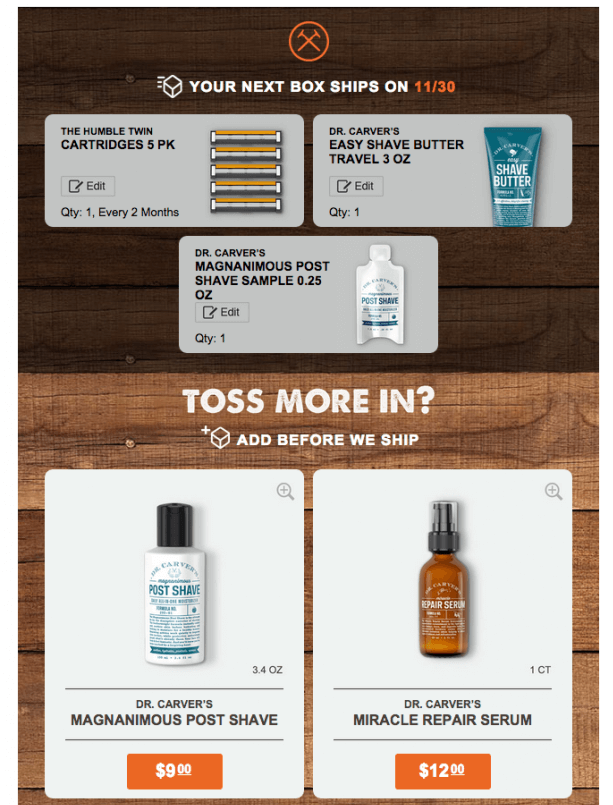
If you want more B2C email examples, you can check the following:
- Ecommerce Newsletter Examples To Inspire You
- Lead Nurturing Email Examples To Implement
- Re-Engagement Email Examples To Revive Your Subscriber List
- Event Invitation Email Examples To Learn From [+Useful Tips]
- Welcome Email Examples You Need To See
Best Practices for a Successful B2C Email Marketing Strategy
Below, we’ve compiled a list of best practices to help you ensure you start on the right foot with your email marketing strategy for B2C.
1. Set specific goals and budget
First, you must determine what you want to achieve. Note down your goals and make sure they’re SMART—specific, measurable, attainable, relevant, and time-bound.
Some examples of SMART goals for email marketing include:
- Increase average customer lifetime value by 5% in Q1
- Gain 1,000 new subscribers in 2024
- Increase open rate by 25% in six months
When determining your budget for email marketing, you should consider a few factors:
- Subscriber list size: The number of subscribers on your list directly correlates to your email marketing costs, as more subscribers mean more emails to send. Good email marketing software offers scalable pricing that changes depending on the subscriber bracket.
For example, Moosend starts at $9/month for up to 500 subscribers and scales to $64/month for 5,001 to 8,000 subscribers, with plans available for up to one million subscribers.
- Frequency of campaigns: How often you should deliver your messages.
- Content creation expenses: The people and tools you need to create your content.
- Any additional resources: Such as graphic design elements, etc.
You can create your budget once you understand your goals and cost factors.
2. Choose the right service provider
Once you know your goals, you can start researching service providers. The best email marketing service provider for you will depend on your specific needs, but there are a few general things you should look for.
A good email service provider should:
- Have a user-friendly interface with drag-and-drop customization
- Offer templates to help you get started
- Let you automate campaigns
- Allow you to send transactional and marketing emails
- Have AI integrations to help you along the way
- Let you create landing pages and sign-up forms to grow your email list
If you’re looking for a powerful and cost-effective tool, you can try Moosend’s email marketing software.
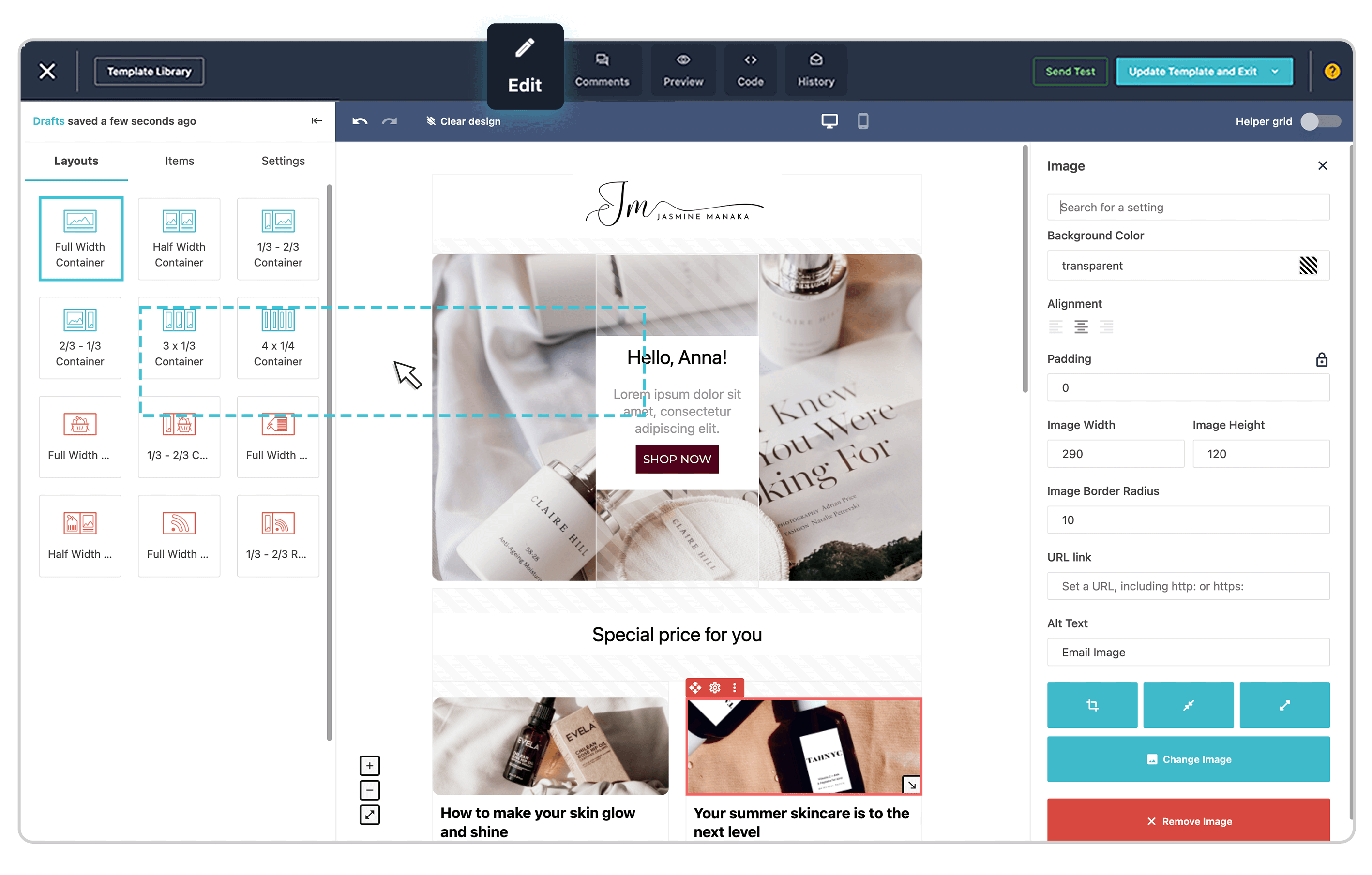
With its user-friendly drag-and-drop builder, customizable templates, AI writer, and advanced personalization and segmentation features, it can help you start with B2C email marketing effortlessly.
3. Plan your lead generation strategy
Long story short, it doesn’t matter how good your email campaigns are if you don’t have the right leads on your email list—they just won’t work.
Having a strong lead generation strategy will ensure you’re attracting the right audience.
Start by defining the criteria your leads should meet. You’ve probably already established your target market, so you can start by using details from there to inform what you should be looking for. This could be:
- Specific demographics
- Geographic location
- Interests and preferences
Then, you can create lead magnets around those criteria. For instance, if your company sells underwear, you could create a lead magnet that offers a curated collection of bras and underwear tailored specifically for each subscriber.
Here’s an example from Third Love:
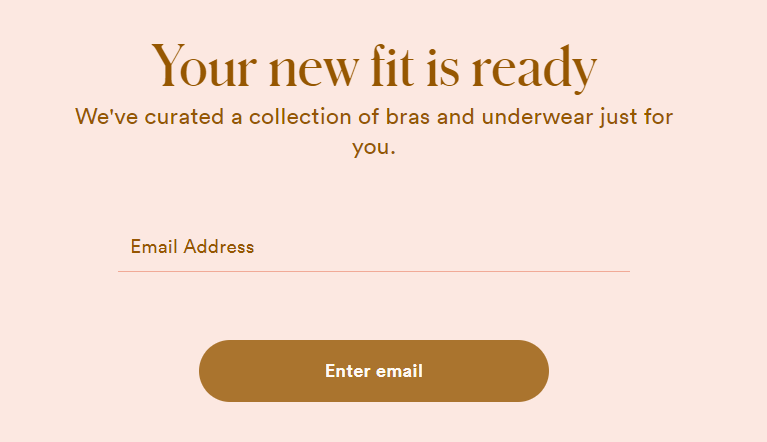
Monitor your lead generation strategy by regularly tracking key metrics such as conversion rates, lead quality, cost per lead, and ROI. Then, optimize it accordingly. Use analytics to understand how well your strategy performs.
Tip: Don’t forget to clean your email list regularly—about once a quarter. After all, most email service providers charge per email, and you don’t want to waste your money sending emails to unengaged subscribers.
4. Maintain a good sender reputation
This is vital if you want your emails to reach your audience’s inbox.
Poor sender reputation results in deliverability problems, and that’s the last thing you want when you’ve spent all that time crafting a beautiful email campaign.
Follow these steps to keep your sender score in the good books:
- Keep an eye on your sender score so you can be proactive about any changes.
- Use a reliable email service provider, ideally one with an approval process, so you can avoid sharing your IP with senders with low scores.
- Use opt-in forms for lead generation to avoid spam complaints.
- Regularly clean your email list to remove recipients who never open your emails, as they’ll eventually damage your reputation.
Further reading: Check our email deliverability guide to ensure your email land in your subscribers’ inboxes.
5. Pay attention to your audience segmentation
Segmentation involves splitting your email list into smaller sub-lists based on certain criteria like demographics and behavior. It’s a useful email strategy as it allows you to send targeted, personalized emails to the groups of subscribers that they will resonate with the most.
For example, you can send loyalty rewards like early access to new products to frequent buyers and re-engagement campaigns to inactive customers if you segment your audience by purchase history.
Additionally, one of the easiest campaigns to create is birthday emails, which make subscribers feel special and valued on their special day. Here’s an example from Seafolly:
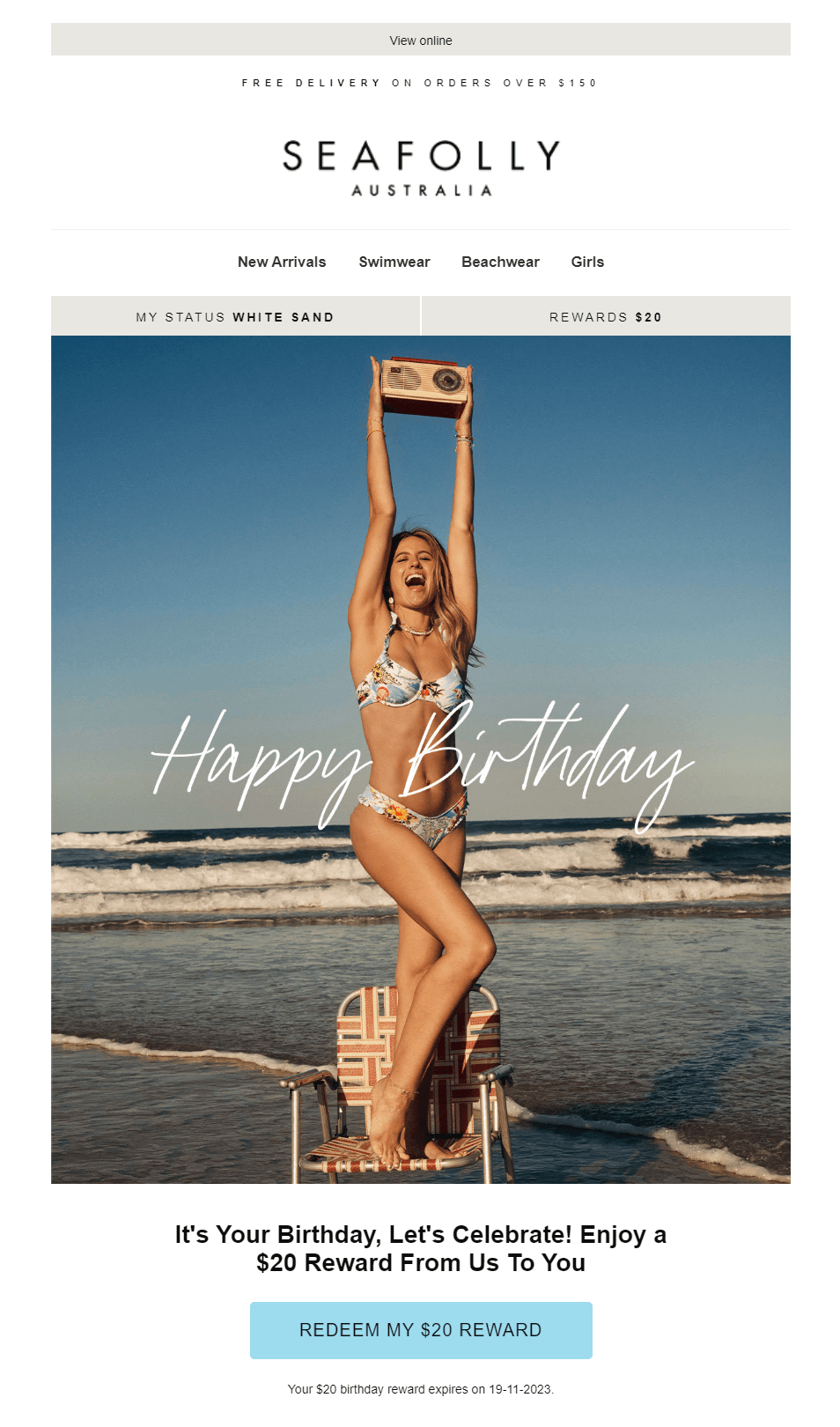
Moosend’s robust segmentation features let you easily break up your list based on simple segmentation data like age and gender, or you can get hyper-relevant and segment based on browsing behavior, past purchases, and more.
Plus, the data updates in real-time, so you’ll never risk sending irrelevant email content.
Further reading: Check our post to discover more customer segmentation examples for B2C.
6. Optimize for mobile
How often do you check your email inbox on your desktop? We’re guessing far less than on your phone. And that’s the case for the majority of people nowadays.
It’s therefore crucial to optimize your email campaigns for mobile, as chances are that’s where your recipients will view them.
Here are some tips to keep in mind when creating your emails:
Here are some tips for creating a responsive email design for mobile:
- Use a single-column layout in your email design to make it easier to read on small screens.
- Place the most important content at the top of your email to grab attention immediately.
- Choose the right email fonts and size to ensure your text is easily readable on mobile devices. A minimum of 14px for body text is recommended.
- Your images need to fit different screen sizes. Use smaller visuals to reduce load times.
- Write short, scannable content that is easy to digest quickly.
- Your call-to-action buttons need to be large, clearly visible, and easy to tap.
Many email service providers, such as Moosend and Mailchimp, offer mobile preview features. These tools allow you to see how your email will look on different mobile devices before you send it, ensuring a seamless user experience.
7. A/B test your B2C email marketing campaigns
A/B testing is crucial as you strive toward continuously improving your email campaigns. It tests different variations of your email content, such as the subject line or call-to-action, to see which versions get better results.
Data is vital for crafting the best campaigns for your audience, and A/B testing is a great method to garner that data.
Here’s what you can A/B test in your emails:
- Subject lines: Test different subject lines to find the highest open rates.
- Preheader text: Create various preheader texts to see which complements your subject line best.
- Send times: Try different send times to identify the optimal time for engagement.
- Email design: Compare layouts, color schemes, and designs for better performance.
- CTA buttons: Test different CTA text, colors, sizes, and placements.
- Personalization: Experiment with personalization levels, such as using names or product recommendations.
- Content length: Test shorter versus longer content to see which engages more.
- Visuals: Compare emails with different images to understand their impact.
- Offers and discounts: Test various offers or discount levels for appeal.
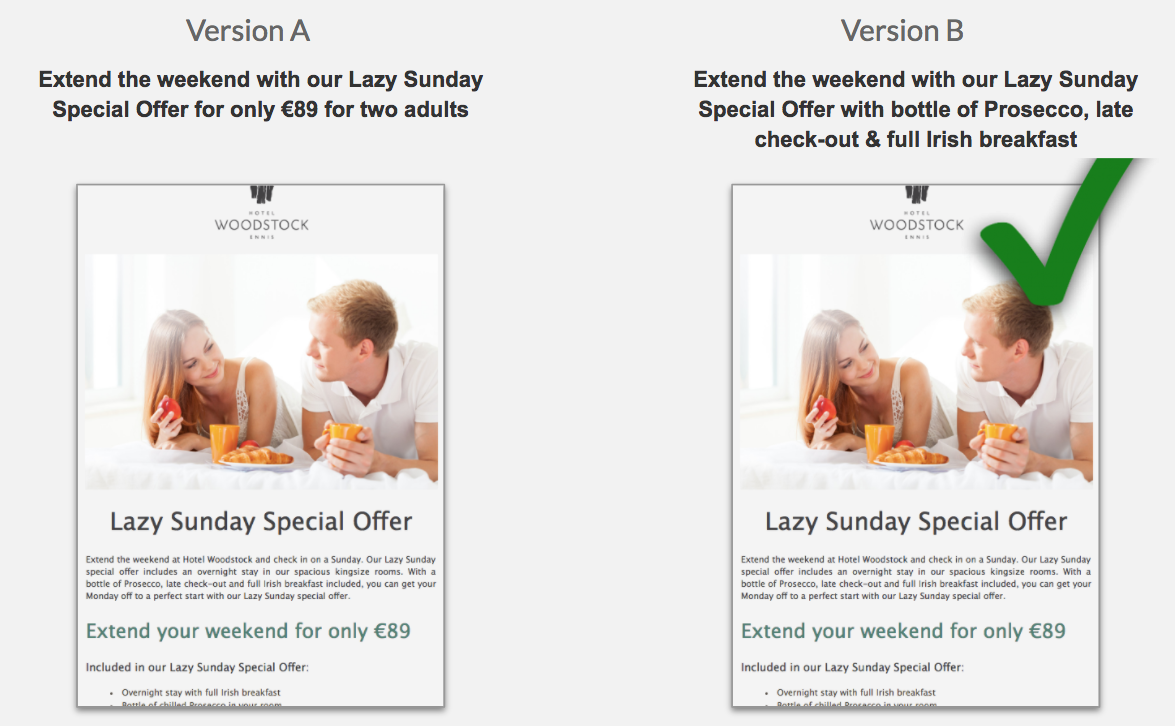
Further reading: Check out our A/B testing post if you want to learn more.
8. Refrain from using clickbait
You won’t BELIEVE this next tip… It’ll shock you!
While you should definitely use subject lines that grab the recipient’s attention, you should avoid spammy words or clickbait irrelevant to the email’s content.
According to our deliverability expert, you should avoid the following no matter what:
- FREE CASH
- Loans
- Free job opportunity
- Sharp
- Violence-related words
Clickbait is deceptive to subscribers and will ultimately damage your reputation. It also does nothing to improve your click-through or conversion rates and actually has the opposite effect.
Avoid this by ensuring your subject lines are always relevant to the email content so you set the right expectations.
9. Use dynamic personalization for your campaigns
Dynamic personalization means automatically personalizing the content of your email campaigns to make them more relevant to the individual recipient.
A common form of this is adding the recipient’s name in your subject line, but you can go much deeper than that and create emails that feel personal with tailored offers and recommendations.
Here’s how Endy does it, creating a B2C email marketing campaign that feels like a personal plain-text message:
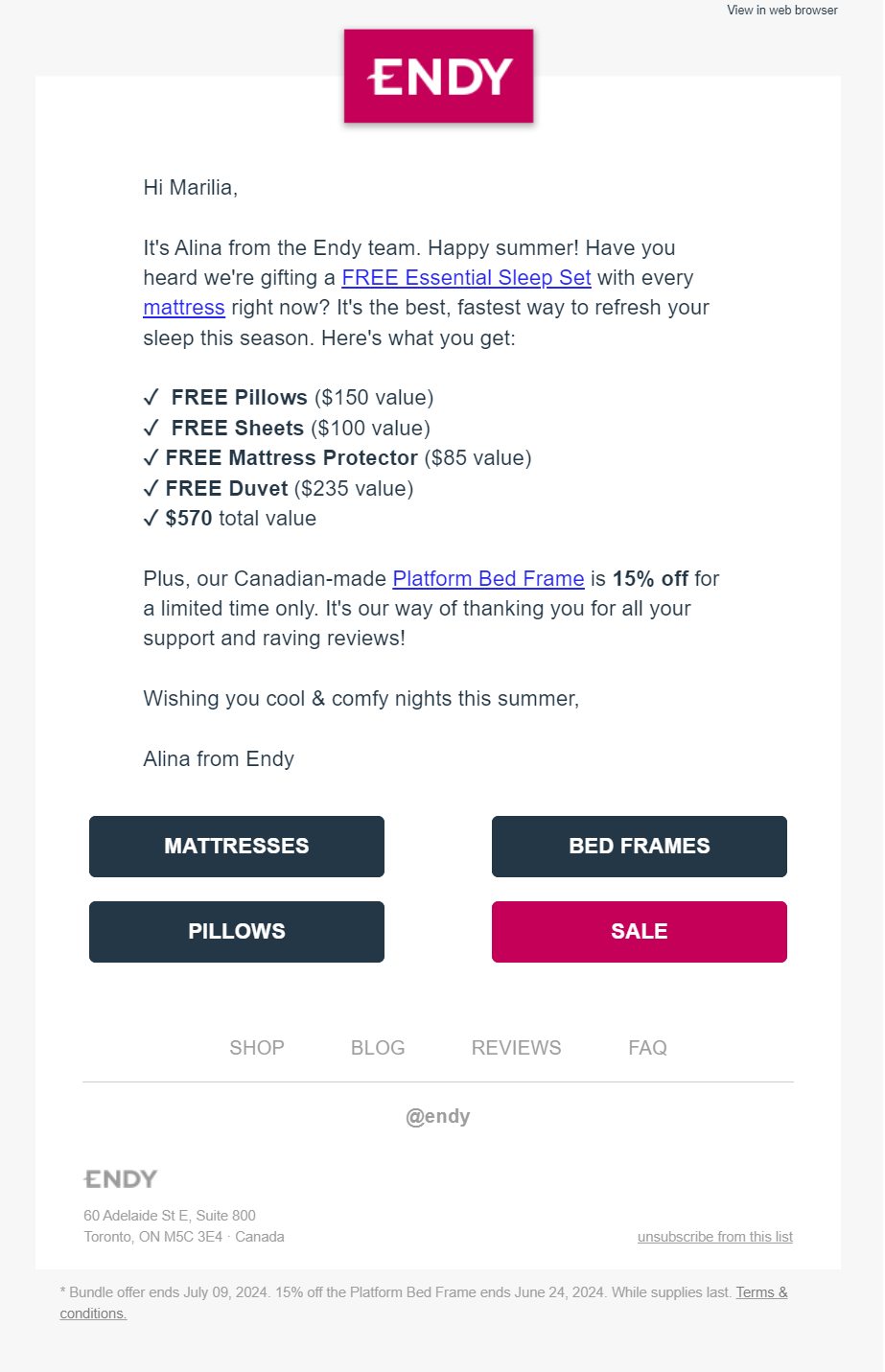
To get started, you’ll need an email platform with advanced personalization features to:
- Send personalized product recommendations based on browsing history, past purchases, and even the weather in the recipient’s location.
- Recover abandoned carts with tailored re-engagement emails.
- Notify customers when it’s time to restock their favorite products.
10. Create automated email sequences
The majority of email service providers have automation features that let you build in-depth automation workflows, moving your leads through various funnel stages with zero manual input.
These automation tools can significantly enhance your marketing efficiency. Some of the sequences you can automate include:
- Welcome sequences: Automatically greet new subscribers with a series of introductory emails.
- Transactional emails: Send order confirmations, shipping notifications, and receipts automatically.
- Re-engagement series: Reach out to inactive subscribers to rekindle their interest.
- Seasonal campaign sequences: Plan and execute holiday or seasonal promotions without manual effort.
Automating these sequences will save you a significant amount of time and ensure timely delivery, enhancing customer experience and engagement.
11. Don’t forget about upselling and cross-selling
Once a customer makes a purchase, they have already established a relationship with your business. That means they’re much more likely to open any post-purchase emails you send.
You can use this to your advantage by incorporating your upsell and cross-sell strategies into your post-purchase email campaigns.
Upselling involves recommending upgraded, more expensive versions of the product your customer has purchased. This marketing tactic is good if your B2C business offers a subscription-based service with different tiers.
On the other hand, cross-selling gives customers recommendations for other products related to the one they purchased, like chopping boards for a customer who bought a knife block.
To create effective cross-sell and upsell emails you’ll need a marketing automation tool with numerous triggers and actions. Moosend offers pre-made recipes along with several customizations to create the sequences you need.
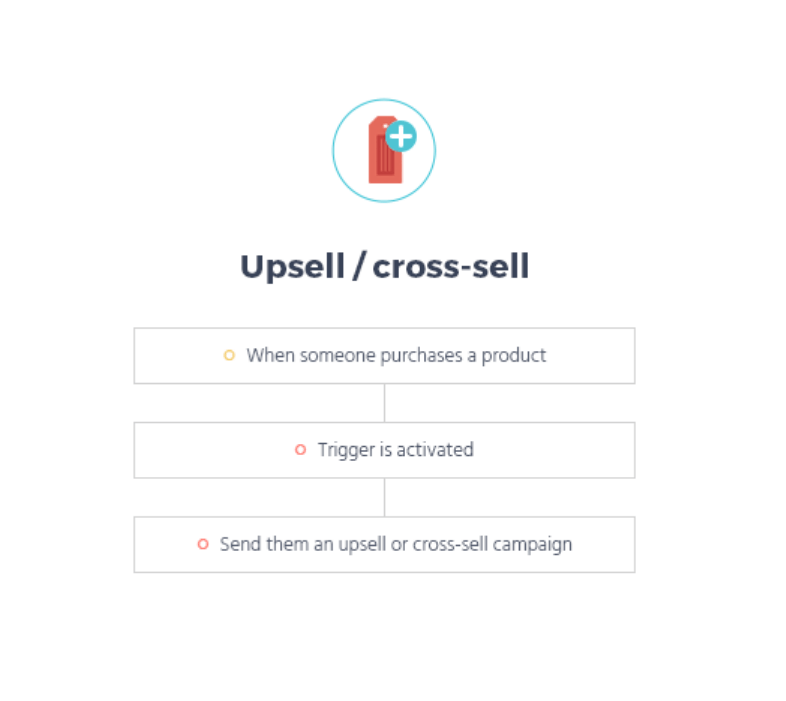
12. Implement cross-channel marketing campaigns
Put some thought into your customer touchpoints. Where will they encounter and interact with your brand before they decide to make a purchase?
Map out the touchpoints and craft cross-channel marketing campaigns, such as social media posts, Google ads, and email campaigns.
Here are a few resources to help you plan your cross-channel strategy:
13. Adapt your attribution strategy
Attribution in marketing refers to crediting the marketing channels, touchpoints, or campaigns that lead to a desired outcome, such as a sale, lead generation, or engagement.
Multichannel marketing can make your attribution complex, especially if you own brick-and-mortar stores.
While many customers will research your products online, many prefer to wait to make a purchase in-store.
This means it’s difficult to attribute the sales to your email marketing campaigns (or any marketing campaign, for that matter). Therefore, you must develop an attribution strategy considering all the touchpoints you mapped in the previous section.
14. Adopt a data-driven approach
Using data like customer behavior, engagement rates, demographics, and purchase history to inform your email marketing strategy and campaigns is crucial to boost your engagement, build customer profiles, and create a personalized user experience.
Use key email metrics like open rate, conversion rate, and click-through rate to understand how your campaigns perform and use the data to improve your strategies continuously.
Take Your B2C Email Marketing to the Next Level
Email marketing is an invaluable tool for B2C businesses that enables direct communication with customers, drives engagement and sales, and fosters loyalty.
By following the best practices outlined in this guide, you can leverage the full potential of B2C email marketing and achieve measurable success by crafting effective, impactful email campaigns that resonate with your audience.
Ready to take your B2C email marketing to the next level? Before you go, it’s important to choose the right email marketing platform to implement the strategies well.
Sign up for a free trial of Moosend today and discover how it can help you launch a successful B2C email marketing campaign.
FAQs
Below, you’ll find answers to some common questions about B2C email marketing.
1. What is an example of B2C marketing?
An example of B2C marketing is an online retailer like Amazon sending personalized email recommendations to customers based on their browsing history and previous purchases.
2.What is the difference between B2B and B2C emails?
B2B emails target businesses, often involving detailed information and multiple decision-makers, with a longer buying cycle. B2C emails target individual consumers, focusing on emotional appeal, quicker conversions, and addressing personal needs and preferences.
3. What is a B2C marketing strategy?
A B2C marketing strategy involves direct marketing to individual consumers through various channels like social media, email campaigns, content marketing, and promotions to drive sales, increase brand awareness, and build customer loyalty.
4. What are the 5 types of B2C?
B2C (business-to-consumer) refers to transactions where businesses sell products or services directly to individual consumers. There are five main types of B2C models:
- Direct Sellers: Companies that sell products or services directly to consumers without intermediaries, e.g. Amazon.
- Online intermediaries: Platforms that facilitate transactions between buyers and sellers but do not own the products or services sold, such as eBay.
- Advertising-based models: Businesses that provide free content or services to consumers and earn revenue through advertising, like YouTube.
- Community-based models: Platforms where users share information and experiences, often leading to transactions based on community recommendations, e.g. Facebook Marketplace.
- Fee-based models: Services that charge a subscription or membership fee for access to content or services, such as Netflix, Disney+, etc.
5. What are the best B2C examples?
Some of the best B2C business examples include:
- Amazon: Online retail giant.
- Netflix: Streaming service providing entertainment content.
- Nike: Sportswear brand selling directly to consumers.
- Starbucks: Coffee chain offering a loyalty app for personalized rewards.
- Apple: Technology company selling products directly to consumers through its stores and online.
